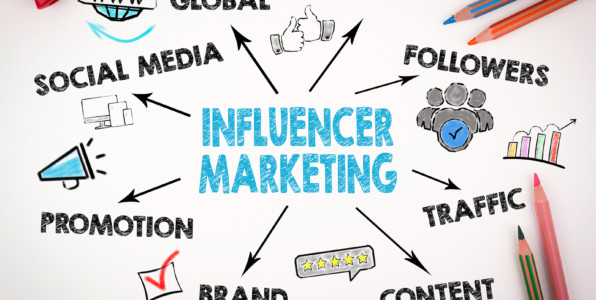Influencer Marketing Legal Concerns and Your Agency

If Shakespeare was still writing today he might rephrase one of his well-known quotes to read: “Uneasy lies the head that wears a social media influencer crown!”
Or more relevant in my world, unsettled sit the agencies caught in the web of influence marketing issues in the campaigns they design for brands.
When news broke on the national college admissions scandal, it seemed headlines just as quickly started to compete with news of the social media influencer caught in the middle, Olivia Jade, the daughter of key figures in the fraud case, Mossimo Giannulli and Lori Loughlin. You can view the full details in this WWD article: Sephora Ends Partnership With Influencer Olivia Jade.
The risks go far beyond mere brand reputation management, with influencers an easy target given the perceived irrationality surrounding the terms and extreme figures that can make up these contracts. The point wasn’t lost on New York Magazine author Madison Malone Kircher in her article “For Once, Influencers Are Not the Worst People in the Story.” Malone Kircher, not unlike industry and culture observers, experiences little sympathy when a mighty influencer takes a fall.
While not every case gets a full-on media blitz such as the college admissions scandal, or the Fyre Festival immortalized in the Netflix and Hulu documentaries, even small setbacks can turn into major damages to your agency and your clients.
In my last article on this topic, Marketing Under the Influence: Understanding the Legal Implications, I shared the most common agency concerns, set against the reality that you’ll be the first call from your client when a campaign, or influencer, goes rogue:
- FTC Disclosure: Assigning responsibility for the following of FTC rules and understanding how the rules apply to all marketing channels: social media, content marketing, video, native advertising, etc.
- Copyright Compliance: Securing written permission to use third-party content or assets in campaigns, such as a photo, video clip, or snip of copy, through an agency, brand, or influencer direct.
- Fair Advertising Rules: Clearly avoiding claims about a competitor in an influence campaign that aren’t appropriate or verifiable.
With our agency clients who are working with, or moving toward, influence campaigns, I start with the importance of education of the rules and regulation for all parties along the chain, along with the critical legal contracts, (such as Brand Ambassador agreements) for campaigns of every size.
In the case of influencers with larger audiences, I’ve seen agencies contract directly with the influencers, or there are sometimes multi-party agreements between brand, agency, and influencer.
As influence marketing continues to mature and evolve, your agency could get caught in the crosshairs of your clients demands of “keeping up.” Don’t the let the risks of being left behind take precedent over the protection of your agency.
Numbers Game: Micro-, Nano-, and Kid-fluencers in The Spotlight
Consider the New York Times article “Online and Making Thousands, at Age 4: Meet the Kidfluencers – Brands are giving lucrative endorsement deals to young children on YouTube and Instagram, raising questions about whether their young followers should be seeing that kind of marketing.” Or the Mashable follow up post with the title “So it’s come to this: An unborn baby ‘kidfluencer’ has 112,000 Instagram followers.” There are obvious concerns of safety, privacy, labor laws, working with children and their parents calling the shots.
Additionally, according to this recent Chief Marketer Article, Micro-, Nano-Influencers Elbow Celebs Out of the Spotlight: “A new study has found that 64 percent of marketers would rather work with micro-influencers, those with 5,000 to 100,000 followers) over celebrities. Nano-influencers, or those with under 5,000 followers, are also on the rise, with 26 percent of marketers choosing to work with them, according to the study from influencer marketing company Activate.” Brands and marketers are turning toward quality and relevancy, over celebrity status and numbers.
What agencies should know is that neither a younger age of the influencer, nor smaller number of followers, make the risks any less significant, and all campaigns should be treated equally from the legal protection standpoint.
And if your agency hasn’t yet taken the plunge into influence marketing, and you’re continuing to advance your digital capabilities, chances are your clients will be knocking on the door soon enough. As Digiday shares, influencer marketing budgets and contracts continue to look more like traditional spokesperson and talent contracts, and campaigns trickle across all traditional and digital media spaces.
Some final thoughts: Should agencies be worried about Influencer Marketing going in-house for brands? According to AdWeek, this is only effective for the fully advanced and strategic in this space, and would still likely require agency partnerships for execution.
Take the time to educate yourself on all the rules and risks along the chain, and you may even discover growth opportunities to cast influence over your clients to move into this area.
Do it the right way and you’ll make your lawyers happy too!
Attending the PRSA Counselor’s Spring Academy, May 5-7, in St. Pete? I’ll be speaking on keeping influencer campaigns “legal” in my session, “Influence Marketing for the PR Pro – How to Create Campaigns That Lawyers Love”
Comments are closed